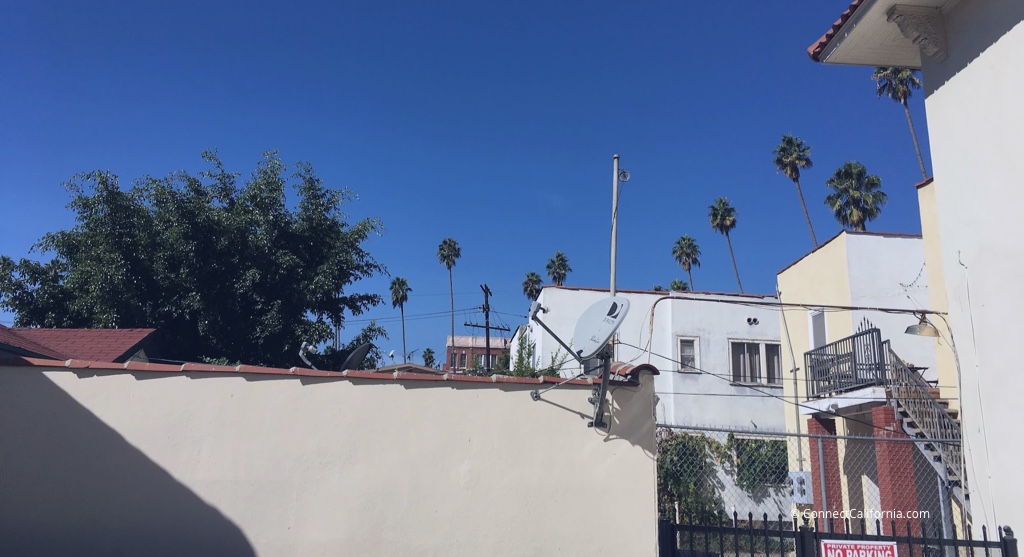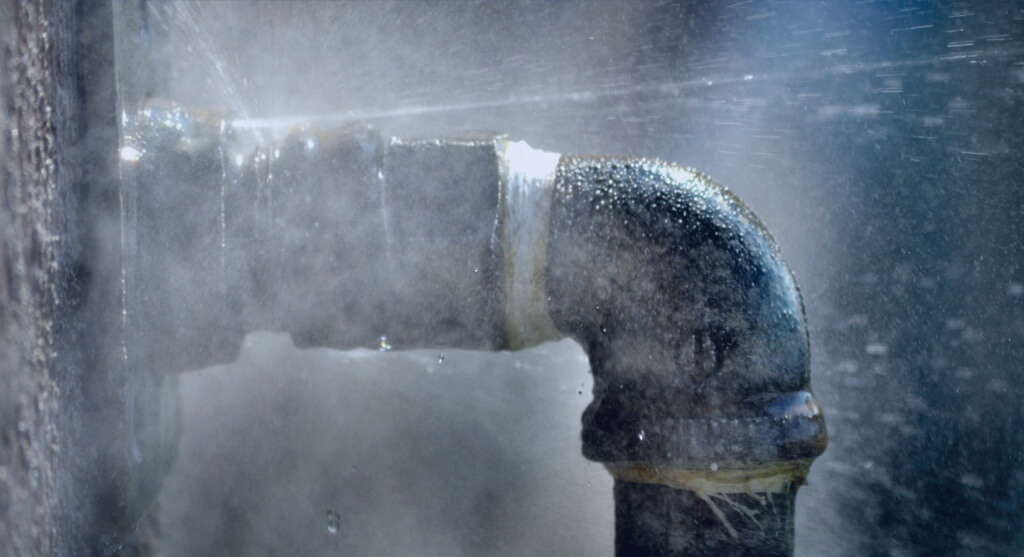Water damages Excess water bills tenant protection
After 15 years of experience as a water utility employee, I’ve seen enough leaks to say this: assessing responsibility is challenging, especially when upstairs rental units or shared walls are involved.
In this article, I’ll lay out the most common scenarios and policies I’ve personally encountered.
I’ll also cover some little-known utility company policies that can help cover excess water bills in outlier cases.
Disclaimer
This page is not intended to provide legal advice. Always seek out professional guidance from a certified source such as a lawyer, local housing department, or tenants union.

Key policy: “Implied Warranty of Habitability” for tenants
If you’re a renter or landlord, the most important policy to be aware of going into any water leak scenario is the California policy requiring “habitable condition” of rental units in the state.
The term “Implied Warranty of Habitability” came from a 1974 California Supreme Court decision in the case of Green v. Superior Court, in which all leases and rental agreements are legally determined to include an Implied Warranty of Habitability.
This means landlords are legally required to keep rental units in a habitable condition at all times. What defines “habitable condition” is described in California Civil Code Section 1941.1.
Regarding water leak damage, “habitable condition” includes plumbing systems in good working order and buildings kept clean and sanitary. In other words, a landlord must keep a rental property with functional water and sewer services and a clean, safe structure that won’t make a tenant sick.
If the plumbing system or sewer pipes in a rental unit are not functioning correctly, the landlord must promptly address the issue. If water damage occurs to the rental unit due to a leaking pipe or sewer backup, the landlord should repair the damage to maintain a clean, safe living space for the tenant.
How to determine water leak damage responsibility
It happened to you — you came home to your apartment and found water damage in your home.
Maybe it was a broken pipe spraying water from under the sink, a toilet backup, or water dripping from the ceiling from a leak in the unit above.
At any rate, it’s a mess and a hassle. Who is going to pay for the damages?
Well, that depends on a few factors:
1. Source of Water Leak
The source, or cause, of the water damage is crucial when determining who pays for damages in a rental unit. Water could leak from plumbing within your unit, a unit attached to yours, or from another source.
A qualified person, such as a plumber or apartment maintenance technician, will need to inspect any units affected by the water leak to narrow down the source and cause of the leak. During their inspection, they may use specialized cameras to look inside plumbing fixtures, pipes, or even walls.

Depending on the severity of the water leak and resulting damage, an insurance claim may be initiated. In these cases, a representative of the insurance company, known as an insurance adjuster, will investigate the water source and the cause of the leak. They will likely visit each affected rental unit and take pictures of the damage.
Ultimately, the person who can provide the strongest evidence from their investigation of a water leak will determine the source and cause of the leak.
2. Type of water leak: slow vs sudden
The water leak source is not the only determination of who ultimately pays the bill. In California, insurance companies treat slow leaks differently than sudden pipe bursts.
The term “sudden and accidental” water leak refers to a significant flow of water where there was no water. Think of this as a water leak spraying several inches or feet or a ruptured pipe flowing gallons of water every minute.
Insurance policies cover damages and repairs from “sudden and accidental” water leaks but don’t cover damages and repairs from slow, seeping water leaks.
For example, a slow water leak is like a few drops of water every minute from a kitchen faucet.
Slow water leaks can occur under a sink or behind appliances such as refrigerators or washing machines.
A slow water leak can damage wood flooring or cabinets by slowly being absorbed by the wood over time, causing it to swell and shrink, or by causing rot.
Even worse, areas damaged by a slow water leak can grow mold and mildew, which are significant health hazards.
It is important to know that insurance companies will not cover damage from slow water leaks since they consider a slow leak the result of neglecting proper appliance and plumbing maintenance.
When investigating damage, an investigator will look for slow water leak signs such as wood swelling or the presence of mold and mildew.
3. Outside source (flooding) versus inside source (burst pipe)
Water damage to a rental unit from a flood event differs from a pipe breaking inside a rental building.
Usually, flooding occurs during extreme weather, such as excessive rainfall. It can also happen when water flows into a rental unit from a water main break in the street. Either way, flood damage occurs from a water source outside the rental structure.
It is important to know that flood damage is not covered under the landlord or renter’s standard insurance policies.
Flood insurance is a separate insurance policy that a property owner or a renter can purchase to cover damage expenses from a flood event.
Remember that even if the landlord has a flood insurance policy, this policy does not cover damage to a renter’s personal property. The landlord’s flood insurance policy only covers repairs to the rental building.
A renter needs a separate flood insurance policy to cover personal property in the event of a flood.
According to the FEMA National Insurance Flood Program website, renter’s flood insurance can be as low as $100 per year, saving a tenant potentially thousands of dollars of out-of-pocket expenses in the event of property damage from a flood event.
Water damage repair responsibility
Once the source or cause of the water leak is determined, who is responsible for the repair costs moving forward becomes clearer but can vary depending on the specific damages involved. To help summarize, refer to the table below:
| Cause of Damage | Who Typically Covers Structural Repairs | Who Typically Covers Personal Property |
|---|---|---|
| Sudden and Accidental Event | Landlord Insurance | Renter’s Insurance |
| Contractor’s Work | Contractor’s Insurance | Renter’s Insurance |
| Tenant Negligence | Tenant | Renter’s Insurance |
| Neighbor (Tenant) Negligence | Neighbor (Tenant) | Renter’s Insurance |
A landlord hires a contractor to work in the building and they cause a water leak. Should that happen, the contractor has insurance to cover structural damages from a water leak.
Suppose you, the tenant, are found negligent regarding a water leak. In that case, you are responsible for repairs, and you can file a claim with renter’s insurance (if you have it) for damage to your personal property, such as a damaged TV or furniture.
Suppose your neighbor, another tenant, is found negligent regarding a water leak. In that case, the landlord’s insurance will cover damages, and the situation becomes an issue between the tenant and the landlord. If you have renter’s insurance, you can file a claim for damage to your personal property.
"Negligence" in renter's insurance policies typically refers to a person’s failure to address a problem in a timely manner. Some examples include not reporting a maintenance issue, such as a slow water leak under a sink, to the landlord, or intentionally causing damage to a rental property.
Unfortunately, tenants without renter’s insurance are responsible for damaged personal property in their rental unit, regardless of the water leak source. The only recourse is a lawsuit, but legal advisers will usually discourage it if the leak wasn’t caused by provable gross negligence by the other party.
Generally, the landlord should repair non-urgent damages resulting from a water leak within 30 days of the event to maintain the Implied Warranty of Habitability.
What does renter’s insurance cover?
As with any other type of insurance, the coverage can vary from policy to policy, depending on how much coverage is purchased. Some general basics:
- Landlord insurance covers structural repairs to restore the rental unit to habitable conditions but does not cover losses to a renter’s personal property. Other covered conditions can include:
- Coverage for the landlord’s personal property such as common area lighting fixtures, landlord-owned appliances, or landlord-owned furniture.
- Liability coverage where a visitor is injured on the property and sues the landlord.
- Loss of Income coverage pays the landlord a replacement for lost income if a rental unit has significant damage making it uninhabitable for an extended time.
- Renter’s insurance covers loss of personal property, loss of use, personal liability, and medical expenses. These other terms refer to:
- Loss of use is where a rental unit is not livable because of covered damages. The policy pays for a temporary place to live.
- Personal liability is for a visitor to your rental who injures themselves while in your unit, then tries to sue you.
- Medical expenses pays bills for a visitor who injures themselves while in your unit severely enough to go to a hospital for medical attention.
Refer to the actual insurance policy and rental agreement for details specific to your insurance coverage.
Tips for handling a water leak damage dispute
If you find yourself in a dispute over paying for water leak damages in a rental unit, arm yourself with the following information in preparation for a formal dispute meeting with your legal or housing authority representative:
Documentation
Gather documentation such as pictures, video, and damage reports to provide evidence of the event and notification to the landlord.
In other words, be ready to show proof of how the event was reported to a landlord and/or affected neighbors (if the water was coming from outside your rental unit).
Pictures of affected areas inside the rental unit before the damage can also be helpful. This type of information can counter a claim of tenant negligence and support a claim of “sudden and accidental leak.”
For example, maybe you have a recent picture of your pet in the kitchen where the under-sink cabinet is visible. This information could support a claim that the under-sink cabinet did not have water damage on that date and help avoid charges of negligence.
Review Insurance Policy and Rental Agreement
Read through any renter’s insurance policy you have, as well as the complete current rental agreement.
Be sure you understand your responsibility as a tenant, and the landlord’s expectations, in the event of water damage.
Even if the water leak damage already happened, read and understand the details for each document to set your expectations during a dispute meeting.
Be prepared for escalation to a hearing
Be prepared that a dispute over damages from a water leak may lead to a final resolution in civil court. In that situation, consider consulting with a legal firm to ensure proper representation in court.
Water bill responsibility: who pays excess utility charges?
If you ask most water utilities, they’ll say the utility account holder is responsible for the billed amount of water use, even if it is higher than normal because of a water leak.
In most rental cases, the landlord is the utility account holder. Changing account information for each new tenant can get tedious or problematic, so keeping the same account holder is more manageable over time.

However, in California, the California Public Utilities Code allows tenants to be utility account holders as well. This applies in cases where landlords have not paid utility account bills on behalf of the tenants.
Type of metering impacts excess charges
The billing method used for utilities should be specified in the rental or lease agreement. As a tenant, be sure you understand how the water utility bill is calculated and paid. Below is a list explaining methods of tenant utility billing:
| How Water Utility Bill is Calculated | Details | Out-of-Pocket Impact for Tenant |
|---|---|---|
| Estimated cost of water is included in monthly rent as a flat rate | Landlord pays the water bill regardless of water usage by a tenant each month | Tenant pays same amount for rent each month of current agreement |
| Cost of water is set percentage of total water bill | Landlord pays the water bill regardless of water usage by a tenant each month | Tenant pays similar amount for rent each month of current agreement; tenant pays more if total water bill is higher (due to a leak, for example) |
In both of the above methods, a single water meter measures the gallons of water used by all rental units, which is known as Shared Metering. Individual metering is another option, although installing individual water utility meters for each rental unit is more expensive.
| Individual Metering | Each rental unit has a water meter measuring gallons of water used in that single unit |
|---|---|
| Shared Metering | A water meter measures gallons of water used in multiple rental units, then that number is divided as specified in the rental agreement |
If a single rental unit with individual metering has a water leak that significantly increases the water bill, other nearby units are not affected.
However, suppose a single rental unit in a shared metering arrangement has a water leak that significantly increases the water bill. In that case, the higher bill could affect other nearby rental units, and a landlord should consider a fair cost adjustment for those tenants.
Take advantage of the “Leak Adjustment” policy
Did you know that if you have a higher water bill due to a significant water leak, you can ask the water utility for a leak adjustment? A leak adjustment is a one-time percentage discount given to reduce a high water bill due to a leak.
Maybe you had a leaky toilet wasting water, but did not know until you received a high water bill? Once the water leak is repaired, save any documentation for parts or service for the repair - for example, a plumber’s invoice for toilet repair.
To ask for a leak adjustment on a water bill:
- Contact the utility billing office and explain that you received a high water bill, then found and repaired a water leak in your home.
- Ask nicely for a leak adjustment on the high water bill.
- Be prepared to submit the repair documentation as proof.
Many water utilities offer this benefit to encourage customers to reduce water waste by looking for and repairing water leaks.
Tenant precautions to avoid future leak issues
As a tenant, these suggestions will help avoid unnecessary complications in case of water leak damage in your rental unit.
1. Only sign leases with clear definition of water metering in writing
As mentioned above, read and understand the rental or lease agreement to know what is expected of both tenant and landlord.
One key item is how utilities, including water, are billed monthly. If the lease agreement is unclear about utility billing, ask for details in writing. When renewing a lease, ask if utility billing methods have changed.
Another key item is how to report damage, such as damage from a water leak.
For example, reporting may be an email with photos, texted pictures, or an online reporting service used by corporate landlords. Submitting damage reports as written, time-stamped documentation is a good practice should a dispute arise in the future.
Take notice of how to report damage after normal business hours or if the main number provided is not answered.
Follow up with any damage reports you submit to ensure proper notification occurs. Simply leaving a voicemail on a landlord’s cell phone could lead to longer repair times, more severe damage, and more hassle for everyone involved.
2. Always maintain renter’s insurance
The relatively small cost for renter’s insurance prevents a tenant from paying much larger expenses if disaster happens.
Consider the high cost of suddenly needing to replace clothing, electronics, and furniture following a severe water leak from a neighbor’s rental unit. Severe damage can make a rental unit unlivable, leaving a tenant without a place to live.
If you purchase renter’s insurance, be sure to read and understand what is covered and what is not covered by the policy. If you live in a rental unit subject to flooding, consider renter’s flood insurance as well.
Tiffanie Hawley has worked in the water treatment industry for nearly 20 years as a treatment plant operator, laboratory technician, regulatory consultant, and plant manager. She aims to educate readers about the scientific and human contributions that are part of producing and protecting drinking water.




